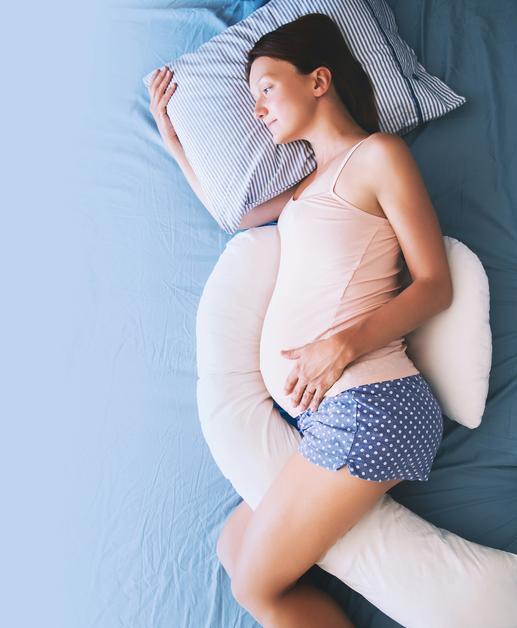The sudden, jarring sensation that sweeps through your calf in the middle of the night—unmistakable yet surprisingly common—can feel as if time itself has paused. For many expectant parents, leg cramps during pregnancy transform simple rest into a nightly challenge. Why do these abrupt muscle spasms seem to strike when your body craves tranquility most? What can be done to soothe these pangs and restore comfort, both day and night? If you have felt the sting of nocturnal cramps, or spent your day anticipating their return, you’re not imagining the intensity—these are physiological responses tied to the remarkable changes unfurling within the body. What follows unpacks the physiology, risk factors, effective strategies for prevention, and evidence-based remedies—piecing together what science and clinical practice illuminate about managing leg cramps during pregnancy.
What are leg cramps during pregnancy? Recognition and impact
Leg cramps during pregnancy are involuntary, abrupt muscle contractions, overwhelmingly striking the calves, yet sometimes extending to the feet or thighs. These spasms create an intense, tight sensation; the affected muscle may harden dramatically, making relaxation elusive. Most often, they’re nocturnal assailants, disrupting the critical sleep parents-to-be desperately need. But the discomfort isn’t confined to the dark—daytime rest and even quiet moments find some grappling with sudden, sharp pain.
You might notice each cramp lasts only seconds or minutes, but the echoes—muscle sensitivity and residual soreness—linger much longer, subtly sabotaging comfort and mobility.
Frequency, timing, and the parental experience
It’s not merely a rare occurrence. Leg cramps during pregnancy affect up to half of expectant mothers, most frequently escalating in the second and third trimesters as your body carries more weight and weaves new pathways for blood flow. Night brings both calm and risk, with cramps most likely to fracture unbroken sleep. Perhaps an evening of relaxation on the sofa is interrupted by the telltale tension—these episodes strike at unpredictable moments. Managing fatigue and movement becomes a delicate balancing act, especially when nights are short and patience thinner.
Triggers and physiological changes: what really causes leg cramps during pregnancy?
Why do they appear more during this unique phase of life? Let’s analyze the internal choreography.
- The growing uterus compresses pelvic veins, slowing the return of blood from your legs. This stagnation starves muscles of oxygen and fosters a build-up of metabolic byproducts, setting the stage for spasms.
- Elevated progesterone levels, while essential for pregnancy health, gently relax blood vessels, compounding the circulatory slowdown.
- Muscle fatigue increases with physical changes—weight gain transforms the body’s center of gravity, taxing leg muscles differently during movement and even at rest.
- Electrolyte imbalances play a starring role. With a higher demand for magnesium, calcium, and potassium, it’s no surprise that a shortfall leads muscles toward erratic contractions. Even subtle dehydration alters the muscle’s delicate chemistry, tipping the scales toward cramping.
Are there other culprits? Absolutely. Long periods of standing, poorly supported footwear, changes in daily activity patterns, and altered sleep positions can all feed into the muscle spasm cycle.
Who is more susceptible, and are some parents at higher risk?
This is not a one-size-fits-all phenomenon. Age plays its part, but multiple pregnancies, substantial weight gain, and intense or insufficient activity create a fertile ground for leg cramps during pregnancy. Even small details—shoes lacking arch support, crossing your legs far too long, or drastically shifting your daily routine—nudge risk upward. Medical histories—some medications, thyroid disorders, certain nutritional challenges—can also make leg cramps feel as if they have taken up permanent residence.
Differentiating leg cramps from other leg discomforts
How can you discern a classic pregnancy cramp from something else?
- Cramps ignite suddenly, with acute, often throbbing or stabbing pain, a muscle that feels like a coiled spring—followed by lingering tenderness.
- Restless legs syndrome presents differently. Rather than pain, it’s an irresistible, uncomfortable urge to move, with odd sensations—crawling, tingling—but not genuine spasm. A stretch soothes a cramp, basic movement quiets restless legs.
- Most importantly, persistent pain, localized redness, notable swelling, or skin color changes can betray deeper issues like deep vein thrombosis (a blood clot), which needs prompt assessment.
Sleep disruption and daily impact: the double hit
Leg cramps during pregnancy steal sleep at the very moment parents need it most. Recurrent awakenings erode emotional balance, shorten patience, and fuel exhaustion that seeps into each day. Sore muscles undermine exercise routines, daily activities, and simple pleasures—like a leisurely walk—becoming daunting tasks. Over time, the effects compound, making minor irritations feel insurmountable.
Preventive strategies: nutrition, movement, and mindful routines
You likely wonder: what can be done to break the cycle? Fortunately, multiple, practical strategies offer relief and prevention supported by both physiology and clinical experience.
Stay hydrated and mind your mineral intake
- Hydration isn’t trivial. Drinking water consistently supports metabolic processes, aids the elimination of accumulated byproducts, and helps muscle fibers function fluidly.
- Prioritize foods rich in electrolytes—magnesium, calcium, and potassium. Incorporate legumes, leafy greens, nuts, seeds, bananas, dairy, and sweet potatoes into daily meals. While prenatal vitamins fill gaps the typical diet can miss, whole foods remain the foundation.
Positional wisdom and supportive footwear
- Sleep on the left side to optimize venous return and minimize swelling. A pillow between the legs can align hips and ease pressure further.
- Select shoes with arch support and a comfortable sole—sidestepping high heels and narrow styles that fatigue leg muscles.
- Periodically elevate your legs, especially after time spent standing, to counter swelling and encourage blood movement.
Safe exercise and gentle stretching
- Gentle movement—walking, prenatal yoga, slow swimming—maintains healthy muscle tone and supports circulation.
- Regular calf stretching before bedtime: Face a wall, hands pressed forward, one foot back, heel on the ground. Hold, switch sides. This simple habit can become a powerful shield.
- Stretches targeting the hamstrings add another layer of prevention for tension that runs down the back of the leg.
Stress management
Fatigue and tension amplify your susceptibility. Mindfulness, brief guided meditations, or simply a series of deep, rhythmic breaths create moments of physical and emotional release—the smallest ritual might tip the odds in your favor.
Safe home remedies and evidence-based relief
A cramp flares—what helps in the moment? Draw your toes toward your shin in a controlled stretch, awakening the calf’s contracted fibers. Firmly, but softly, massage from the ankle upward to encourage circulation and reduce tightness. A warm compress (a hot water bottle or gentle shower) relaxes the stubborn muscle; some find alternating warm and cool water further improves relief. If you can, take a few steps—movement often helps the muscle regain composure.
What about supplements or over-the-counter products? While magnesium or calcium supplements are sometimes advised, their benefit is not uniform; always seek medical advice before adding any self-directed treatment, as excess intake can ironically disturb the body’s precise balance.
Alternative therapies like Epsom salt baths may offer comfort without strong scientific backing—but as long as they remain gentle and moderate, such rituals can be part of your toolkit.
When medical attention is warranted
Do not hesitate to contact a healthcare professional if a cramp defies resolution, grows intense, or brings company—swelling, redness, heat, skin color changes, ongoing heaviness, or shortness of breath. These signs may announce a blood clot or vascular concern needing assessment, sometimes with imaging (like a Doppler ultrasound) or bloodwork to check for mineral imbalances or hidden medical problems. Most routine cramps do not stem from hidden disease, but any alarming or persistent change deserves prompt evaluation—your health is far too valuable to leave doubt lingering.
Medical evaluation and safe approaches during pregnancy
Clinical assessment typically involves a precise description of symptoms, sometimes a gentle physical exam, or, when warranted, blood or imaging tests. Management centers on conservative, non-drug strategies—movement, hydration, stretching, footwear—all proven, low-risk foundations. Supplementation only enters the conversation if a genuine deficiency or increased need is detected by your provider; otherwise, a balanced diet and quality prenatal vitamin suffice.
Challenging common myths: what research actually shows
It’s tempting to look for a single fix—one magic exercise, a supplement promising transformation. Reality is more nuanced. Research links leg cramps during pregnancy to an intricate web of triggers: mechanical strain, circulation, hormonal shifts, minerals, and lifestyle. No solitary measure guarantees relief; progress often comes from a holistic mix—stretching, diet, supportive shoes, hydration, stress management. Caution: avoid self-prescribing drugs like quinine, which are unsafe in pregnancy and never justified for leg cramp relief. Most importantly, not every cramp signals deficiency or severe disorder; they’re a natural (if unwelcome) companion to the body’s tremendous adaptation.
Key takeaways
- Leg cramps during pregnancy escalate in frequency during the later trimesters and often disrupt rest when it’s most needed.
- Overwhelmingly harmless but frequently uncomfortable, these spasms respond best to layered prevention—hydration, stretching, mineral-rich foods, supportive footwear, and thoughtful routines.
- Magnesium or calcium supplementation is not universally helpful and should only be initiated following medical assessment.
- Persistent or severe pain, or symptoms like swelling, heat, redness, or skin color changes, always warrant medical evaluation.
- Compassionate self-care—tailored nutrition, gentle movement, restful sleep, and the support of healthcare professionals—remains the best ally in navigating leg cramps during pregnancy with confidence and ease.
Support and knowledge are always within reach. For personalized advice, easy-to-follow health questionnaires, and recommendations tailored for your child, feel free to download the Heloa app. Empower your parenting journey, one step—and a comfortable leg—at a time.
Questions Parents Ask
Can leg cramps during pregnancy affect the baby’s health?
Rassurez-vous, leg cramps are generally uncomfortable for the parent but do not impact the baby’s health. These spasms are a normal response to physiological changes and usually don’t signal any issues affecting the baby’s well-being. If you ever have additional concerns, especially if cramps are accompanied by unusual symptoms, reaching out to a healthcare professional is always a good idea for peace of mind.
Do leg cramps during pregnancy mean I’m lacking a specific vitamin?
It’s easy to wonder if leg cramps signal a deficiency. While they may sometimes be linked to imbalances in minerals like magnesium, calcium, or potassium, they often result from a mix of causes: muscle fatigue, changes in circulation, and natural body adaptations during pregnancy. A varied, balanced diet and staying hydrated are usually enough to support your needs. Before considering supplements, discussing them with a healthcare provider is essential, as too much of a vitamin or mineral can also have unwanted effects.
Are there ways to prevent leg cramps without medication?
Absolutely. Many parents find relief through gentle lifestyle adjustments. Regular, light stretching—especially of the calves before bedtime—can make a big difference. Hydration and a diet rich in key minerals help support healthy muscle function. Wearing supportive footwear and elevating your legs when possible also reduces discomfort. These simple routines are safe and comfortable for most people awaiting the arrival of their baby.
Further reading:









